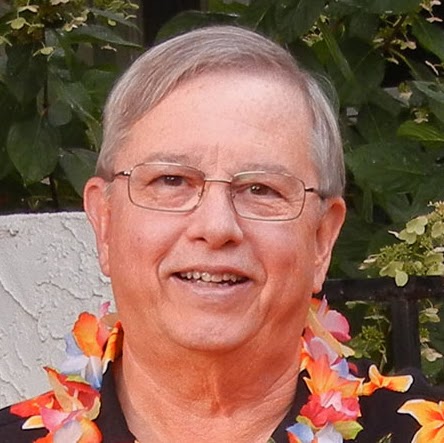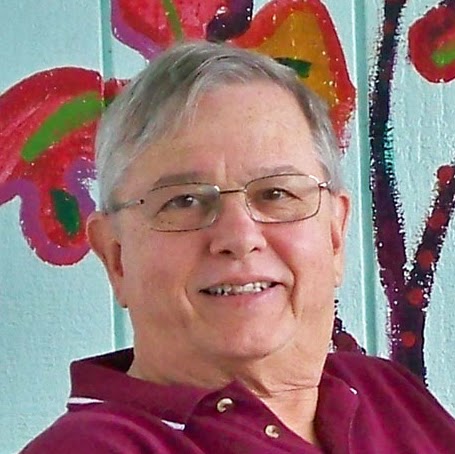David P Manley
age ~42
from Hermitage, TN
David Manley Phones & Addresses
- 117 Windchase Run, Hermitage, TN 37076
- 420 Scotts Creek Trl, Hermitage, TN 37076
- Downey, CA
- Nashville, TN
- Lawrenceville, GA
Ranks
-
Licence:Arkansas - Authorized to practice
-
Date:1978
Resumes

David R Manley
view source
Data Analyst
view sourceWork:
South River Mortgage
Data Analyst
Data Analyst

David Manley
view sourceWork:
Family Gap Ministries 2008 - 2011
Director and President
Director and President

David Manley
view source
President And Chief Executive Officer
view sourceWork:
Go Real Travel
President and Chief Executive Officer
President and Chief Executive Officer

David Manley
view source
David Manley
view source
David Manley
view sourceUs Patents
-
System For Aerodynamic Flows And Associated Method
view source -
US Patent:7635107, Dec 22, 2009
-
Filed:Aug 9, 2005
-
Appl. No.:11/200515
-
Inventors:Arvin Shmilovich - Huntington Beach CA, US
Yoram Yadlin - Irvine CA, US
Roger W. Clark - Huntington Beach CA, US
David J. Manley - Huntington Beach CA, US -
Assignee:The Boeing Company - Chicago IL
-
International Classification:B64C 21/04
-
US Classification:244207, 244208
-
Abstract:A system and method for controlling boundary layer flow over an aircraft wing are provided. The system includes at least one wing element, and a plurality of ports defined in the wing element and in fluid communication with one another. The system also includes at least one fluidic device operable to continuously ingest the fluid through at least one of the ports and eject the fluid out of at least one other port to control boundary layer flow of the fluid over the wing element.
-
Cargo Aircraft
view source -
US Patent:D616804, Jun 1, 2010
-
Filed:Oct 3, 2008
-
Appl. No.:29/325636
-
Inventors:David J. Manley - Huntington Beach CA, US
Aaron J. Kutzmann - Long Beach CA, US
John C. Vassberg - Long Beach CA, US -
Assignee:The Boeing Company - Chicago IL
-
International Classification:1207
-
US Classification:D12319
-
Aircraft Configuration Utilizing Fuselage, Wing, Empennage, And Exhaust Flow Control Devices
view source -
US Patent:8061655, Nov 22, 2011
-
Filed:Mar 25, 2009
-
Appl. No.:12/410813
-
Inventors:David J. Manley - Huntington Beach CA, US
Aaron J. Kutzmann - Long Beach CA, US
Robb Gregg, III - Fullerton CA, US
John C. Vassberg - Long Beach CA, US
Antonio B. Gonzales - Cypress CA, US
Steve Hollowell - Huntington Beach CA, US
Neal Harrison - San Clemente CA, US
Edward Lawson - Long Beach CA, US
Max Kismarton - Renton WA, US
Kevin Lutke - Huntington Beach CA, US -
Assignee:The Boeing Company - Chicago IL
-
International Classification:B64C 1/00
-
US Classification:244120, 244119, 244207
-
Abstract:Apparatus and methods provide for an aircraft configuration that utilize structural and engine exhaust flow control devices to enhance performance. Aspects of the disclosure provide a fuselage with a pressure vessel nested within a non-cylindrical outer mold line fairing. A twin-boom empennage may be connected to the fuselage. A wing may attach in a blended wing configuration with a sweep angle that positions the aircraft center of lift to minimize any pitching moment induced by the activation or deactivation of an upper surface blown (USB) system. The USB system may include a conformal USB flap positioned downstream of an engine exhaust plume, as well as a controllable USB nozzle aperture to promote exhaust flow attachment to the conformal USB flap. A universal convergent nozzle may be utilized to connect each controllable USB nozzle aperture to a corresponding internally mounted aircraft engine.
-
Shape-Changing Control Surface
view source -
US Patent:8382045, Feb 26, 2013
-
Filed:Jul 21, 2009
-
Appl. No.:12/506462
-
Inventors:David J. Manley - Huntington Beach CA, US
Robert E. Grip - Rancho Palos Verdes CA, US -
Assignee:The Boeing Company - Chicago IL
-
International Classification:B64C 3/44
-
US Classification:244219, 244218, 244213
-
Abstract:A method and apparatus for controlling the shape of a control surface. A structure is rotated about an axis. The structure is located between a flexible skin and a skin located substantially opposite of the flexible skin. An assembly is moved to change the shape of the control surface in response to a rotation of the structure. The assembly is movably connected to the structure and is configured to move such that the flexible skin forms a plurality of curvatures.
-
Swept-Wing Powered-Lift Aircraft
view source -
US Patent:8403256, Mar 26, 2013
-
Filed:Mar 25, 2009
-
Appl. No.:12/410894
-
Inventors:Aaron J. Kutzmann - Long Beach CA, US
David J. Manley - Huntington Beach CA, US
John C. Vassberg - Long Beach CA, US
Neal Harrison - San Clemente CA, US
Max Kismarton - Renton WA, US -
Assignee:The Boeing Company - Chicago IL
-
International Classification:B64C 39/12
-
US Classification:244 45R, 244207, 244119, 244 55
-
Abstract:Apparatus and methods provide for a swept-wing powered-lift aircraft. Aspects of the disclosure provide a powered-lift aircraft that utilizes the engine exhaust flow over upper surface blown flaps to increase lift during various flight operations. The powered-lift aircraft has wings with inboard portions and outboard portions. The adjacent inboard and outboard portions share a swept leading edge. The leading edge is swept to a degree that shifts the outboard portion rearward to a position in which the aircraft center of lift has little to no variance upon the activation or deactivation of a powered-lift system.
-
Swept-Wing Powered-Lift Aircraft
view source -
US Patent:8567711, Oct 29, 2013
-
Filed:Feb 5, 2013
-
Appl. No.:13/759659
-
Inventors:Aaron J. Kutzmann - Long Beach CA, US
David J. Manley - Huntington Beach CA, US
John C. Vassberg - Long Beach CA, US
Neal Harrison - San Clemente CA, US
Max Kismarton - Renton WA, US -
Assignee:The Boeing Company - Chicago IL
-
International Classification:B64C 39/12
-
US Classification:244 45R, 244207, 244119, 244 55
-
Abstract:Apparatus and methods provide for a swept-wing powered-lift aircraft. Aspects of the disclosure provide a powered-lift aircraft that utilizes the engine exhaust flow over upper surface blown flaps to increase lift during various flight operations. The powered-lift aircraft has wings with inboard portions and outboard portions. The adjacent inboard and outboard portions share a swept leading edge. The leading edge is swept to a degree that shifts the outboard portion rearward to a position in which the aircraft center of lift has little to no variance upon the activation or deactivation of a powered-lift system.
-
High-Lift Distributed Active Flow Control System And Method
view source -
US Patent:20060102801, May 18, 2006
-
Filed:Nov 1, 2004
-
Appl. No.:10/980147
-
Inventors:David Manley - Huntington Beach CA, US
-
International Classification:B64C 21/06
-
US Classification:244208000
-
Abstract:The present invention is directed to a distributed active flow control (“DAFC”) system that maintains attached airflow over a highly cambered airfoil employed by an aircraft or other similar applications. The DAFC system includes a primary power source comprised of one or more aircraft engines, one or more power conversion units, and optionally, one or more auxiliary power units. The power conversion units are coupled to one or more aircraft engines for supplying power to a distribution network. The distribution network disperses power from the one or more power conversion units to active flow control units disposed within one or more aircraft flight control surfaces (e.g., the aircraft wing, the tail, the flaps, the slats, the ailerons, and the like). In one embodiment, an auxiliary power unit is included for providing a redundant and auxiliary power supply to the distribution network. In another embodiment, a back-up power source is provided in communication with the distribution network for providing an additional redundant power supply.
-
High Lift Distributed Active Flow Control System And Method
view source -
US Patent:20080173766, Jul 24, 2008
-
Filed:Jul 26, 2007
-
Appl. No.:11/828437
-
Inventors:David J. Manley - Huntington Beach CA, US
-
International Classification:B64C 21/00
B64C 21/06
B64C 21/04 -
US Classification:244208, 244204
-
Abstract:The present invention is directed to a distributed active flow control (“DAFC”) system that maintains attached airflow over a highly cambered airfoil employed by an aircraft or other similar applications. The DAFC system includes a primary power source comprised of one or more aircraft engines, one or more power conversion units, and optionally, one or more auxiliary power units. The power conversion units are coupled to one or more aircraft engines for supplying power to a distribution network. The distribution network disperses power from the one or more power conversion units to active flow control units disposed within one or more aircraft flight control surfaces (e.g., the aircraft wing, the tail, the flaps, the slats, the ailerons, and the like). In one embodiment, an auxiliary power unit is included for providing a redundant and auxiliary power supply to the distribution network. In another embodiment, a back-up power source is provided in communication with the distribution network for providing an additional redundant power supply.
Lawyers & Attorneys

David J. Manley - Lawyer
view sourceLicenses:
Arkansas - Authorized to practice 1978
Name / Title
Company / Classification
Phones & Addresses
Professional Engineer
Vacuum Tube Logic
Electrical/Electronic Manufacturing · Household Audio and Video Equipment · Stereophonic & High Fidelity E
Electrical/Electronic Manufacturing · Household Audio and Video Equipment · Stereophonic & High Fidelity E
4774 Murietta St #10, Chino, CA 91710
9096275944, 9096275994, 9096276988
9096275944, 9096275994, 9096276988
AMERICAN FREIGHT BROKERS, LLC
Chairman
Association of Christian Schools International
Education Management · Business Consulting Services Religious Organization · Educational Consultants
Education Management · Business Consulting Services Religious Organization · Educational Consultants
731 Chapel Hl Dr, Colorado Springs, CO 80920
PO Box 65130, Colorado Springs, CO 80962
731 N Bch Blvd, La Habra, CA 90631
7195286906, 7195310716
PO Box 65130, Colorado Springs, CO 80962
731 N Bch Blvd, La Habra, CA 90631
7195286906, 7195310716
President
HSILOP STAH, INC
2222 Ave Of The Stars #803E, Los Angeles, CA 90067
President
D.M.I.S., INC
2222 Ave Of The Stars #803, Los Angeles, CA 90067
President
MANLEY, GORDON & ASSOCIATES INSURANCE AGENCY INC
3130 Wilshrie Blvd 6, Santa Monica, CA 90403
3130 Wilshire Blvd, Santa Monica, CA 90403
3130 Wilshire Blvd, Santa Monica, CA 90403
Googleplus

David Manley
Work:
IslandWeb Ventures - Director of Marketing & Publishing (1999)
About:
Looking for the best places to retire in the US and Overseas.
Tagline:
Retirement writer and publisher. Seeking great retirement places.

David Manley
Work:
Best Health Secrets - Editor
Tagline:
The Best Choices Diet helps you make better food choices

David Manley
Work:
InGo - CTO

David Manley

David Manley

David Manley

David “Static” Manley

David Manley
Youtube
Get Report for David P Manley from Hermitage, TN, age ~42





